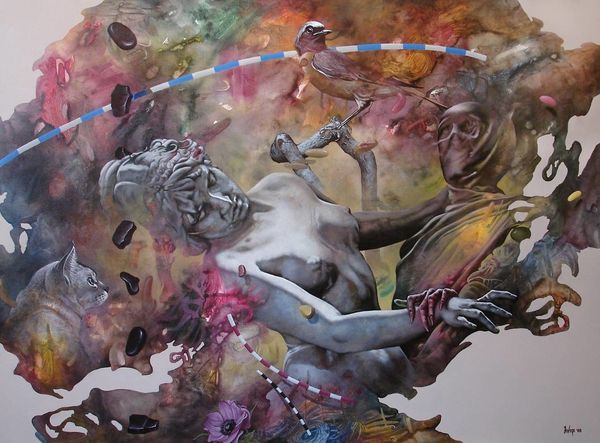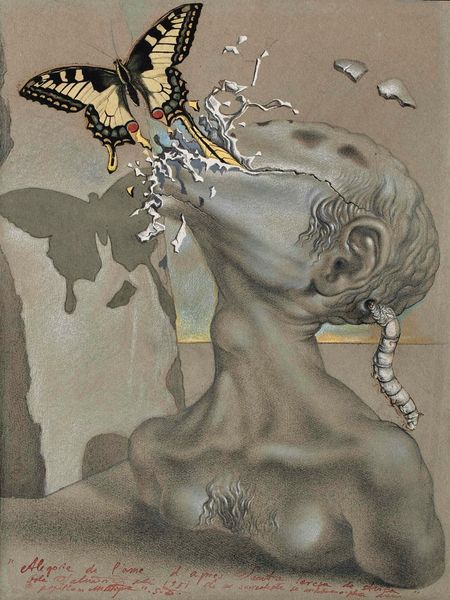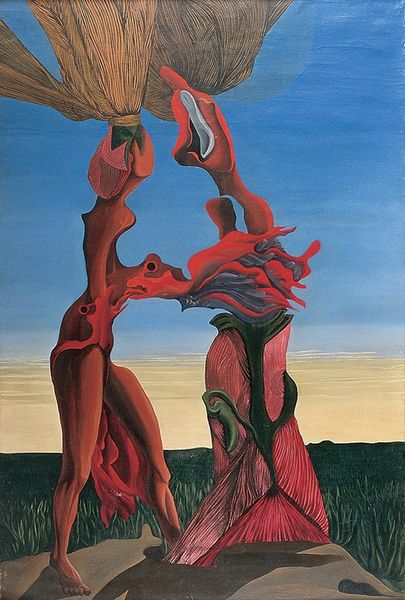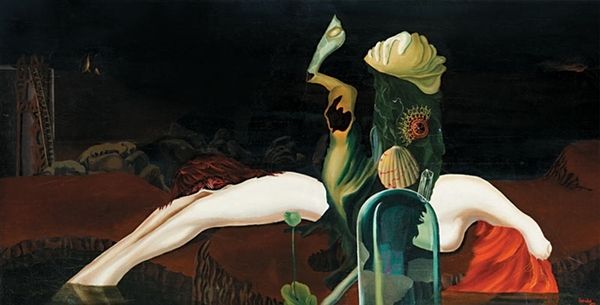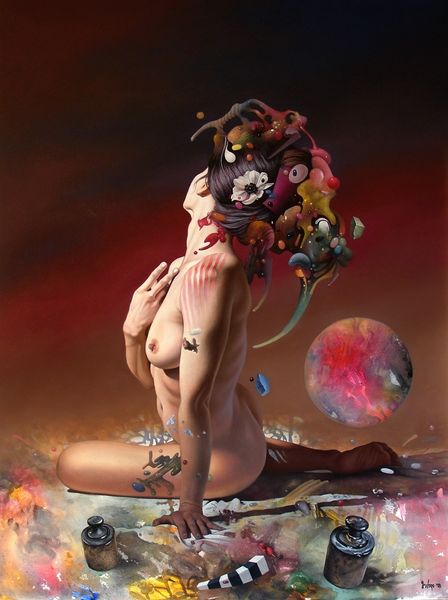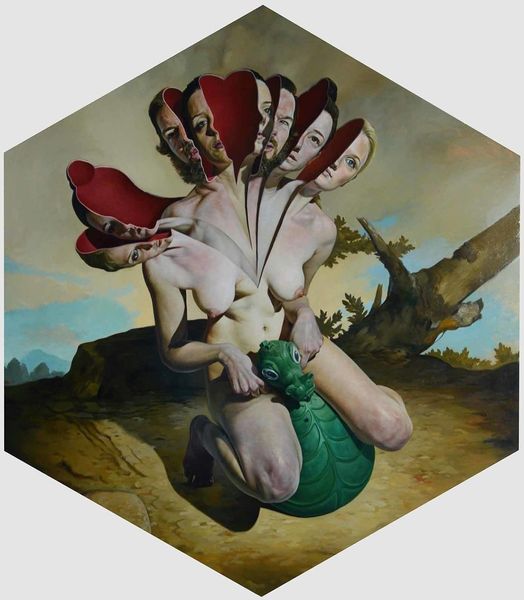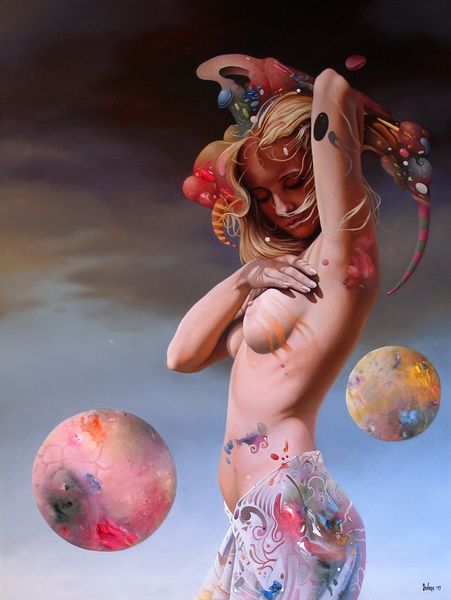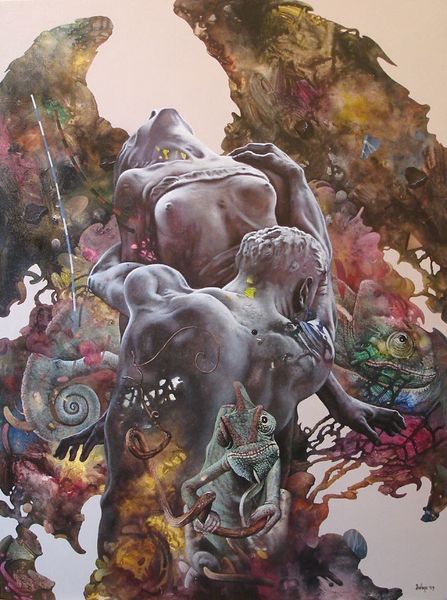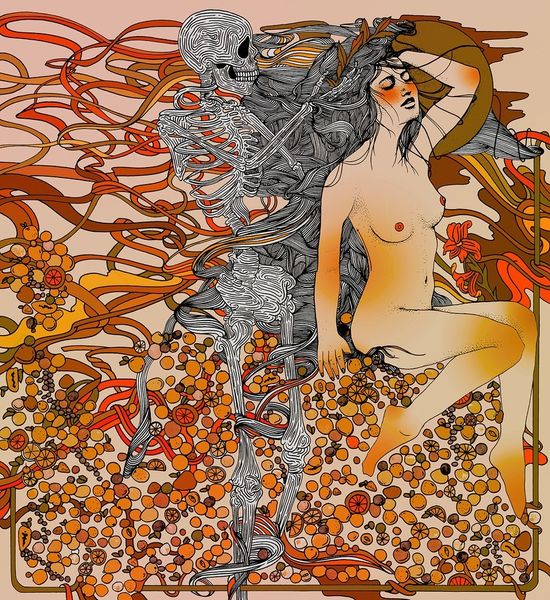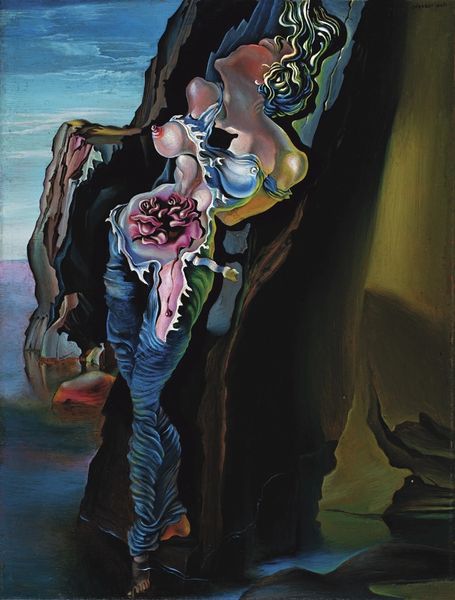
painting, oil-paint
#
painting
#
oil-paint
#
landscape
#
figuration
#
neo expressionist
#
surrealism
#
surrealist
#
nude
#
surrealism
Copyright: Glenn Brown,Fair Use
Curator: Glenn Brown's "Dali-Christ," painted in 1992. It’s a large oil on canvas piece. What's your initial impression? Editor: Disquieting. There's a monstrous figuration set against this surrealist landscape. The muted color palette amplifies a sense of unease and something violent in the making. Curator: Brown has reworked details of other artist's painting styles, particularly those found in Salvador Dali’s work. There is an amalgamation of classical and surrealist aesthetics that complicates the original composition. Editor: The title is a blatant nod to Dali’s "Christ of Saint John of the Cross". What’s interesting is the tension he builds through this distorted almost grotesque re-imagining. Brown destabilizes that conventional symbol. Curator: Notice how Brown employs meticulous brushwork and glazing techniques reminiscent of classical portraiture to create this surface sheen. But upon closer inspection, the form deconstructs in areas of impasto and abstraction, negating any single unified subject. Editor: Exactly! Brown's title sets an expectation, yet his figure confounds it. We have to consider the artwork within larger narratives about religion and contemporary alienation and crisis. Why invoke Dali, and why now? Curator: The art-historical layering, the deliberate citation—Brown’s practice is referential. I read it as a discourse on originality and reproduction in art. Are these recognizable images completely transformed into a postmodern statement on originality, a key idea from the time in which Brown began his artistic practice? Editor: I disagree to a point. His transformation is pointedly grotesque. By juxtaposing beauty with distortion, and drawing on an established aesthetic tradition and religious imagery, Brown evokes powerful emotions of unease. I can't help but consider how the male gaze might affect such grotesque images in modern religious themes. Curator: That may very well be. And even when adopting recognizable artistic practices of past eras, like glazing, it’s important to note that these historicizing tendencies are never done in full emulation of old-school classical painting. He adopts their aesthetic traits without imitating the original historical values they embodied. Editor: It seems he uses both form and reference ironically, posing some pointed cultural questions for those able to navigate his layered lexicon. Curator: That’s right, the visual qualities demand attention and interpretation of this complex layering. Editor: It remains unsettling, prompting a dialogue about image manipulation and cultural contexts that continues to be important.
Comments
No comments
Be the first to comment and join the conversation on the ultimate creative platform.
